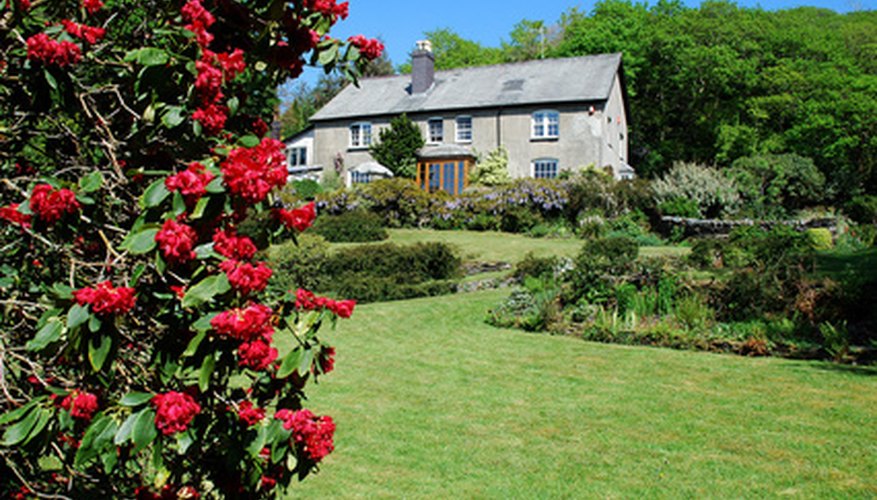The Edwardian Era was characterised by an upper class that embraced fashion and leisure activities but cultivated a natural garden mixed with exotic plants. The gardens were filled with herbaceous perennials, ferns and the imported and unusual. The era began in 1901 and lasted until 1910, under the reign of King Edward VII, and is also known as the Belle Époque or beautiful era, because the well-to-do sought to capture civilisation's art and culture. Elegant homes were the background for gardens with well-shaped lawns for croquet, soft colourful borders and hardscapes like pergolas and arbors.
Herbs and Woody Plants
Woody shrubs and perennials gave shape to beds in the Edwardian landscape. Hydrangea, yews and herbaceous perennials like lavender became the beginning points of the Edwardian garden border. Spiraea bloomed among elder and dogwoods, and birches, viburnum and rhododendrons framed tender annuals. Popular landscapers of the time like Gertrude Jekyll and Edwin Lutyens used the natural trees and bushes as a backdrop for herbs, perennials and some annuals. Gardeners often incorporated topiaries into the landscape and ferns were part of the natural plantings.
- Woody shrubs and perennials gave shape to beds in the Edwardian landscape.
Climbing Flowers and Bulbs
The Edwardian garden featured pathways and arbors laden with fragrant flowers. Night blooming jasmine and clematis competed with honeysuckle. Borders featured seasonal colour with the introduction of non-native bulbs such as tulips and iris. Hosta's large leaves gave texture to shady areas under trees and around ponds. Regal lilies and hyacinths added their scent to the air and soft pastel colours to the borders. Anemone and galanthus paraded across the landscape. Imported and interesting bulbs became a must-have for the Edwardian garden in the early part of the last century.
- The Edwardian garden featured pathways and arbors laden with fragrant flowers.
- Night blooming jasmine and clematis competed with honeysuckle.
Perennial and Annual Gems
The Edwardian garden did not include many annuals as we use them today. The garden was supposed to be a feast for the senses year-round and fill in and mature. Annuals are not useful in that capacity since they only last a short time. Roses were a very important part of the garden, and often entire sections were devoted to them with rare and unusual species. Poppy, campanula, delphinium, verbena, bergenia and celosia formed a swath of colour along the border beds.
- The Edwardian garden did not include many annuals as we use them today.
- Roses were a very important part of the garden, and often entire sections were devoted to them with rare and unusual species.
